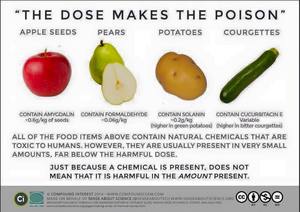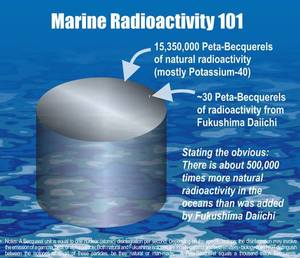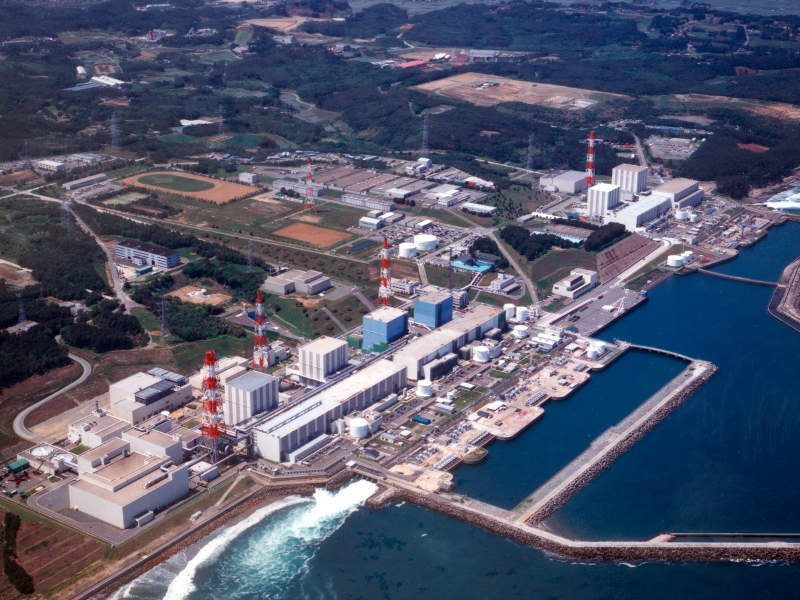Regular readers know that I shill pretty consistently for nuclear power, both as the best path for remediating global warming (should remediation actually be required) and as a clean, pro-environment power source in general. I don’t only do so on this blog – I argue the case all over the place.
As is common for many matters of policy and opinion, there are people who think that they can rebut this advocacy with one-word or one-phrase replies. In their minds, merely “reminding” me (as if there’s any chance I was unaware) of Three Mile Island, Chernobyl, or Fukushima is enough to capture victory and end the debate. It’s like thinking that a libertarian can be shut down by asking “what about the roads?” As I linked in the roads post, “this is level one shit.” I virtually guarantee that most who say “Fukushima!” as a rejoinder against the expansion of nuclear power have put about much effort into learning about that accident (and about nuclear power in general) as it took to type that one word.
This does not, of course, mean that those who have questions shouldn’t be offered explanation. So, a quick review.
In early 2011, the strongest earthquake to ever hit Japan in recorded history, and concurrent tsunami that killed more than 15,000 people, overwhelmed the Fukushima plant, resulting in meltdowns and radiation releases, including release of contaminated water into the ocean. Fukushima has been classified as a Level 7 on the International Nuclear Event Scale, the highest/worst classification and the only disaster other than Chernobyl to receive such a ranking. You can read about it in detail on Wikipedia.
Radioactive elements released into the atmosphere by the Fukushima accident were detected across the Northern Hemisphere. Radioactive elements released into the oceans were detected in tuna caught in the Pacific, and measured all the way across the Pacific, on the West Coast of the United States.
Sounds bad, right? Hold that thought.
A core principle, perhaps the core principle, of toxicology is summarized by:
The dose makes the poison.
 This applies to the foods we eat, the water we drink, and the sunlight we feel. Every moment of every day, we are exposed to substances that can kill us in sufficient quantity or concentration. And, every moment of every day, we are dosed with ionizing radiation (i.e. radiation at or above the frequencies that cause molecular/cellular damage), in sunlight, in the air we breathe, in the foods we eat, and in the water we drink.
This applies to the foods we eat, the water we drink, and the sunlight we feel. Every moment of every day, we are exposed to substances that can kill us in sufficient quantity or concentration. And, every moment of every day, we are dosed with ionizing radiation (i.e. radiation at or above the frequencies that cause molecular/cellular damage), in sunlight, in the air we breathe, in the foods we eat, and in the water we drink.
The releases from Fukushima were, as well-stated by one expert, “measurable but not hazardous.” The measurements are an attestation to the sensitivity of equipment, not the prevalence of dangerous radioactivity. As the two attached images show, the amount of released radiation attributable to Fukushima is beyond trivial – from one of the worst nuclear accidents in history. Moreover, experts at both the World Health Organization and the United Nations concluded that the public’s exposure to Fukushima-accident radiation was insufficient to have caused any health problems.
And, while it is true that Japan determined four recovery workers became ill in subsequent years, and that one died (in 2018, seven years after the accident), we must bear in mind that this was a natural disaster of epic scale, and that this qualifies as a validation of nuclear power’s safety, given the incredibly low overall harm caused. No death should be trivialized, but for comparison, there are roughly 100 oil rig deaths every year in the US, and 15,000 or more global coal mining deaths per annum.
Much more depth of material, as well as debunking of all sorts of myths, half-truths, and outright lies, can be found here.
Let’s also briefly turn an eye to Chernobyl. Rather than being an indictment of nuclear power, Chernobyl is one of grotesque irresponsibility born of a repressive socialistic regime. The reactor’s design was inherently unsafe, the plant was built without a containment vessel (that thick concrete structure that keeps everything bottled up should something go wrong, that is a standard element of Western nuclear power plants), and there was gross human incompetence from inception to disaster recovery. Still, the current estimate of deaths from Chernobyl stands at 200. Within the context of accidental deaths in the routine industry of energy production, even Chernobyl’s toll (not that anything like that accident could ever even happen in the West) is not remotely extraordinary.
Even before counterweighting with the environmental benefits of switching from coal to nuclear, the facts tell a tale of a remarkably safe source of power. Factoring in more modern reactor technology, including inherently-safe (i.e. they shut down rather than melt down in the event of cooling loss) designs tips the overall safety balance even further towards nuclear power. Adding in the reductions in atmospheric particulate pollution, which itself kills thousands every year, and it’s arguable that opposing the expanded use of nuclear power borders on being immoral.
Covering the entirety of the nuclear power issue is beyond the scope of one blog article, but I hope that the information contained here is enough to at least give you pause before leaping to scream “But, Fukushima!” in response to someone’s advocacy. The facts are massive on the pro-nuclear side, and the sooner that ignorance- and fear-based public opposition to nuclear power goes away, the better off we all will be.


The extraordinarily minimal impact resulting from the catastrophic failure of Fukushima is, if anything, a testament to the safety of nuclear power – even with a (now known to be) deeply flawed 50 year old design. Fukushima operated safely for 40 years before a pair of unprecedented natural disasters struck in rapid succession.
Gen IV nuclear reactor technology is ready to be commercialized.
Some key improvements you don’t hear much about:
+ Reduced half life of radioactive waste from 1000’s of years to <100's;
+ Improved operational safety by eliminating moving parts, reducing working pressures, eliminating water coolant loops, and passive shutdown measures in case of emergency.
These improvements, in turn, offer new opportunities:
++ Sustainability: Ability to reuse spent fuel reserves, creating a closed nuclear fuel cycle – mitigating the insolvable waste storage problem.
++ Resiliency: Small footprint, low maintenance designs allow electricity generation by municipalities, improving electrical grid stability by supplanting sparse monolithic generators with many small plants.
Not your dad's nuclear plant.
A nuclear engineer I casually know tells me that conversion of neutron flux more directly to electrical potential is not only possible but actually in use in countries with more rational regulation of the nuclear industry. This would surely have a higher yield than using the reactor core essentially as the boiler of a steam engine, particularly when you read that some nuclear plants exhaust so much heat in to the neighboring stream that the water temp increases by 10 degrees